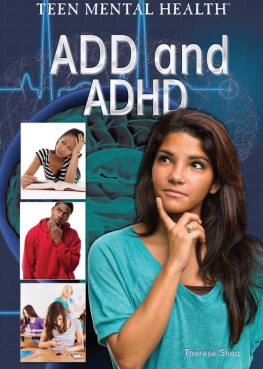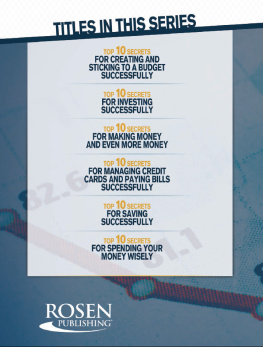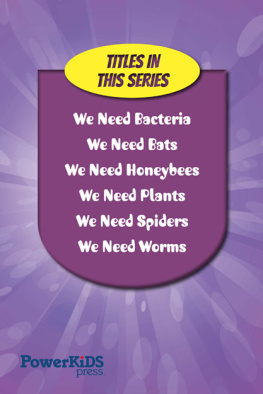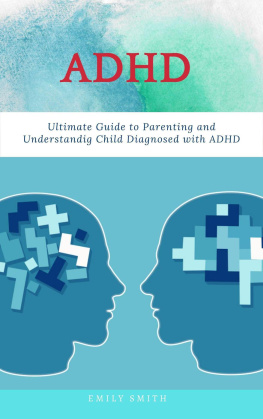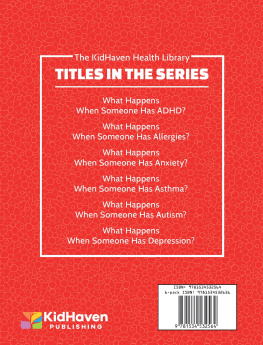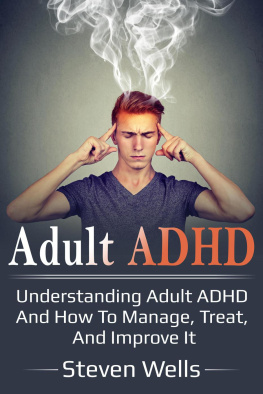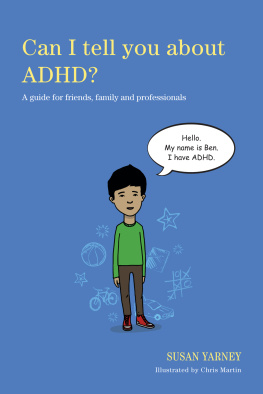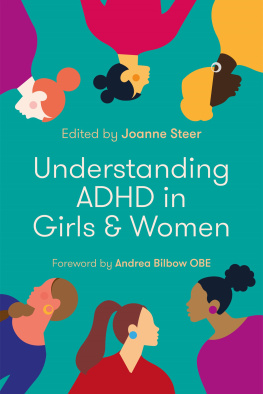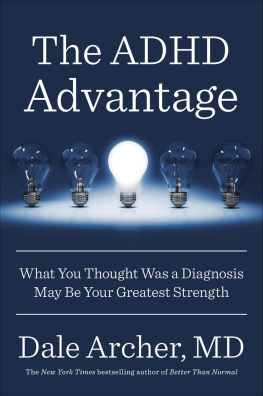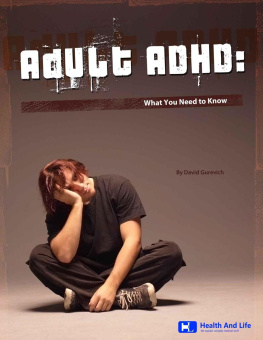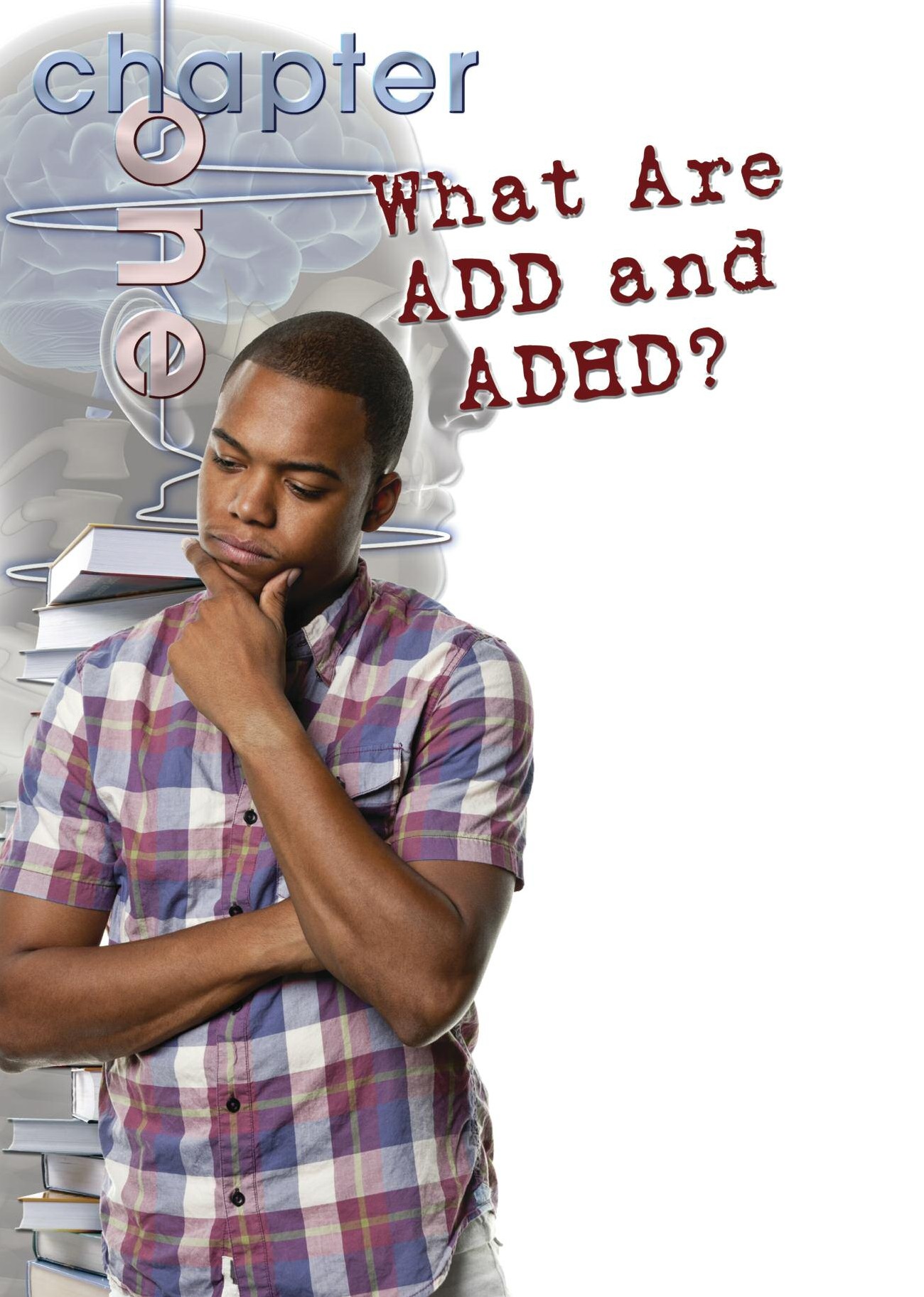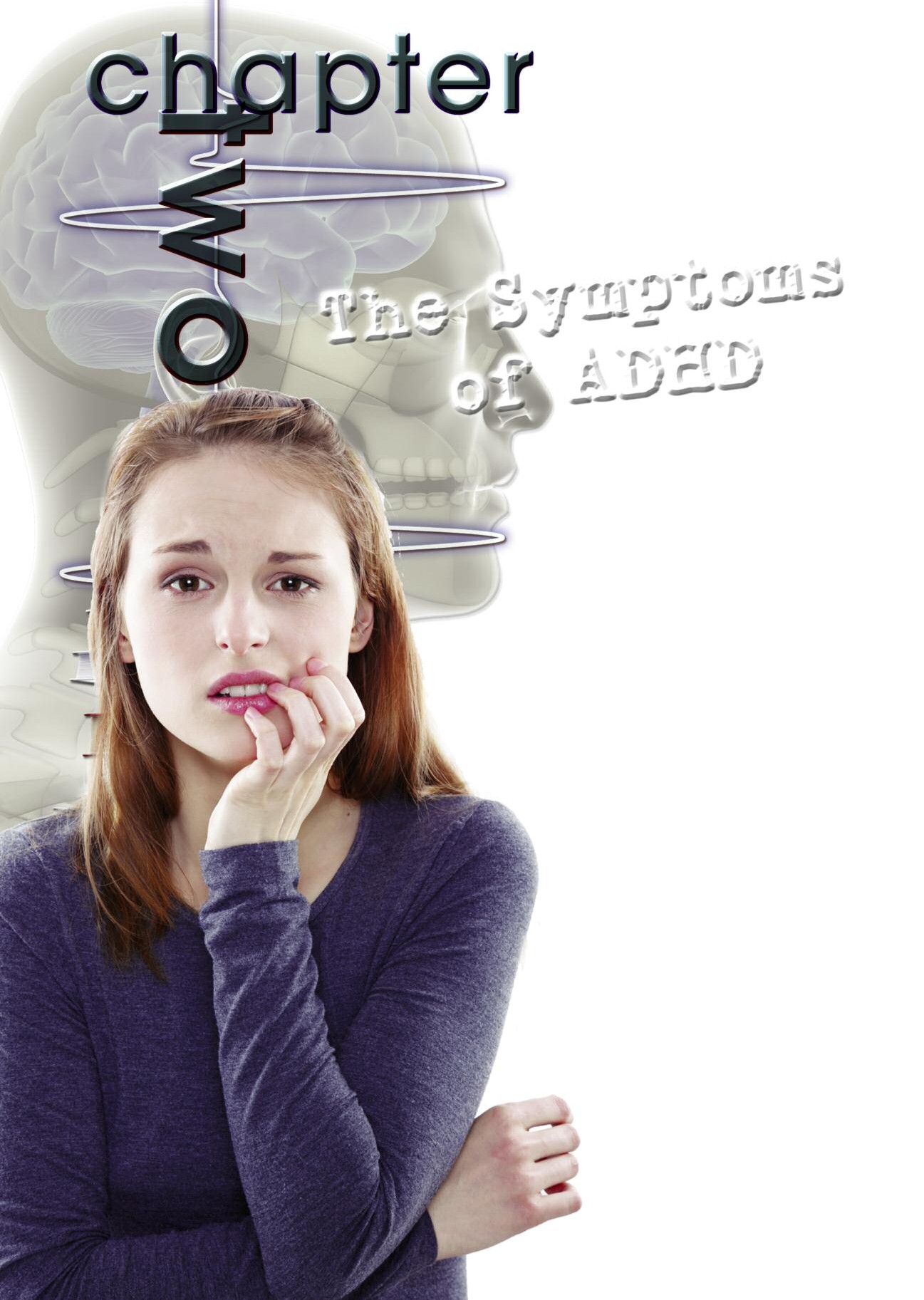Published in 2014 by The Rosen Publishing Group, Inc.
29 East 21st Street, New York, NY 10010
Copyright 2014 by The Rosen Publishing Group, Inc.
First Edition
All rights reserved. No part of this book may be reproduced in any form without permission in writing from the publisher, except by a reviewer.
Library of Congress Cataloging-in-Publication Data
Shea, Therese.
ADD and ADHD/Therese Shea-First edition.
pages cm-(Teen mental health)
Includes bibliographical references and index.
ISBN 978-1-4777-1749-3 (library binding)
1. Attention-deficit hyperactivity disorder-juvenile literature.
2. Attention-deficit disorder in adults-Juvenile literature. I. Title. RJ506.H9S535 2014
618.92'8589-dc23
2013012403
Manufactured in the United States of America
CPSIA Compliance Information: Batch #W14YA: For further information, contact Rosen Publishing, New York, New York, at 1-800-237-9932.
ADD and ADHD are two abbreviations tossed around in the media, in schools, and in everyday life. You probably already know the terms are used to label, often wrongly, young people who do not pay attention or cannot sit still in class. Everyone feels distracted, impulsive, or excited sometimes. These are not indications of ADD or ADHD.
ADD and ADHD are disorders, meaning they are conditions that have a deeply negative effect on a persons life. Specifically, ADD and ADHD are neurobehavioral disorders. That means the behaviors exhibited as a result of the disorderssuch as the inability to concentrate, stay focused, and ignore distractionscan be traced to neurons in the parts of the brain that control these abilities. ADHD may also be categorized as a neurodevelopmental disorder, as it impairs the growth and development of neurons.
People who suffer from ADD or ADHD may simply appear withdrawn and not necessarily exhibit symptoms that others can see.
ADHD stands for attention deficit/hyperactivity disorder. The definition of the disorder has been changed and amended many times, but the basic symptoms remain: inattention, impulsivity, and hyperactivity. ADD stands for attention deficit disorder. This term is sometimes used interchangeably with ADHD, but it is actually a type of ADHD that does not include hyperactive behaviors.
Some people think ADHD is a new condition, but only the label is new. The first medical record of children exhibiting the combination of inattentiveness, impulsiveness, and hyperactivity was in 1902. Since then, ADHD has been given many different names, including minimal brain dysfunction, restlessness syndrome, and hyperkinetic disorder.

Hyperactivity is just one of the symptoms of ADHD. Hyperactivity is not just another name for being energetic. It is an abnormal restlessness and desire to be active.
ADHD can be hard to diagnose because it does not have clearly defined markers or symptoms as a disease or illness like cancer and chicken pox have. For that reason, some people do not believe ADHD is a real disorder. However, many accepted disorders, including manic depression and schizophrenia, cannot be diagnosed by a blood test or another definitive examination. Few would argue these are not actual mental ailments. Most professionals agree that ADHD is a legitimate neurobehavioral disorder.
One reason ADHD is on the minds and lips of so many people is its prevalence. According to a recent household survey by the U.S. Centers for Disease Control and Prevention (CDC), 9 percent of all American children ages three to seventeen have been diagnosed with ADHD. That is more than five million young people. Some estimates are even higher.
According to a recent Northwestern Medicine study using reports from doctors offices, 10.4 million people under age 18 were diagnosed with ADHD at physician visits over the course of one year recently, compared with 6.2 million a decade before. Past estimates of ADHD occurrence were lower than those of today, some as low as 3 percent. Is it more common today? No, it is more likely that awareness of the disorder and its symptoms have led to more people being tested for it. Interestingly, ADHD is more commonly found in boys, who are about twice as likely to be diagnosed with ADHD than girls.
ADHD has been found in every country that has been studied. Prevalence rates have been reported from 1 to 10 percent in Canada, Germany, the Netherlands, New Zealand, Norway, Puerto Rico, and the United Kingdom.
However murky the causes of ADHD are, its impact is powerful. The disorder affects all areas of young peoples lives: at home, at school, and in social situations. There are ways of controlling behaviors and managing symptoms so that people can have normal lives. Professionals do not always agree on the type of treatment and how safe those treatments are, specifically medications, so it is important that those affected learn about their disorder and take actions appropriate for their unique condition.
For many, ADHD is not something they outgrow. According to the CDC, about 4 percent of American adults have ADHD. It is not just a childhood disorder. The symptoms diminish with age, so a five-year-old with ADHD and an adult with the same diagnosis will not act alike even in similar situations. The five-year-old may not be able to stop jumping around, while the adult may pace a room. They both feel urges to engage in these hyperactive behaviors. Teenagers and adults may also exhibit impulsiveness by interrupting conversations. They may frequently forget to complete daily activities or have a hard time finishing tasks at work and school. All with ADHD struggle in activities and situations in which those without ADHD often succeed.

Impulsiveness is another characteristic of ADHD. Those with ADHD may not be able to weigh the consequences of their actions as others do.
ADHD has no cure, so those diagnosed with it need to learn to live with the obstacles of the disorder. People with ADHD are more likely to drop out of school, have car accidents, and lose their job, and they are at greater risk for substance abuse. They may quit or be fired from their workplace because of the far-reaching effects of their condition. They may also see their relationships suffer. That is why it is important to address the possibility of an ADHD diagnosis and learn to manage the disorder. With a wide variety of treatments available, people with ADHD can be successful and happy with their lives.

